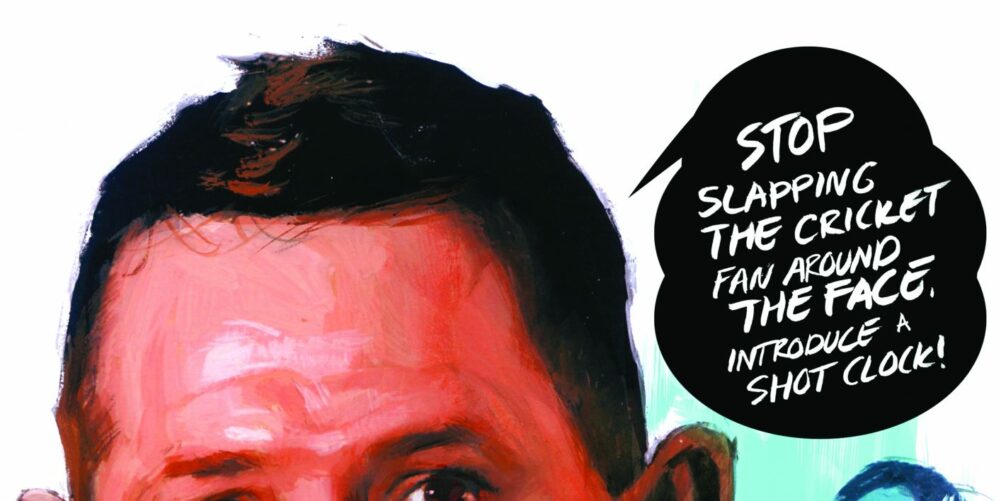Baseball is nostalgically known as America’s pastime, but has been leapfrogged by basketball as the US’ second most popular sport.
With medical research confirming that attention spans are decreasing in modern society, the slump has generally been attributed to its lengthy games putting off younger fans who have been attracted to sleeker basketball games played within two-and-a-half hours.
Bill Simmons, the influential American sports writer and podcaster, believes even football – or soccer as coined in
the US – has a legitimate chance to eventually challenge baseball’s popularity because of its snug two-hour allocated time frame.
So, obviously, the staid sport of cricket has a continual dilemma in trying to keep afloat in these hectic times. Shorter formats have been devised to satisfy new fans leading to the ECB’s mysterious ‘The Hundred’ competition as part of its obsession for creating an optimum game of two-and-a-half hours like basketball.
Test cricket, too, has had much spotlight on its length mostly centred on shortening it to four days. However, unsurprisingly for a sport that often festers through quirks and archaic rules, cricket still drags on much longer than it should through slow over rates which continue to be a scourge, yet no one seems to have answers on how to effectively curb it.
The heated issue resurfaced recently when West Indies captain Jason Holder was suspended for the third Test after his team failed to keep up with the required rate in Antigua. There was much outcry over the ICC’s decision, most notably from Michael Vaughan and Shane Warne, who both believed the penalty was extreme given the second Test lasted
a mere three days.
Slow over rates obviously didn’t have an impact on the result, and usually does little to affect the outcome of a match – apart from very rare instances when teams are trying to stall on the final day of a Test. Some people don’t believe it is much of an issue, but the unnecessary dawdling during a Test further feeds into cricket’s detrimental perception as a painstakingly slow sport.
Cricket administrators decided to crackdown on slow over rates in the Nineties due to the West Indies’ habit of meticulously taking their time before honing in on the prey with their four-pronged pace attack. In the ensuing decades, teams have moved through the overs quicker, but barely ever get through 90 overs in the six hours of allocated time.
Apart from occasionally in the Sub-continent due to the amount of spin used, the extra 30 minutes allowed is almost always needed. This is merely confirmed when only 53-55 overs have been bowled by tea.
And, still, the extra 30 minutes doesn’t always ensure a full complement of 90 overs in a slap in the face of paying spectators who too often are shortchanged. There shouldn’t even be an extra half-an-hour granted apart for if play had been earlier interrupted or a match is on the brink of finishing.
A Test day should be a maximum of six hours, period. If that means even shortening breaks then so be it. Does lunch really need to be 40 minutes? Couldn’t it be shortened by 10 minutes like the innings break in ODIs? And couldn’t tea be cut by five minutes? Fifteen minutes could be added equating to three or four overs.
Umpires, not just captains, should be proactive in getting things moving and place more emphasis on reducing the time allowed for captains setting their fields and talking to bowlers. Often that is merely about gamesmanship and ensures nothing is really happening on the field exacerbated further when fielders just aren’t in position to start an over.
Instead of finding simple measures, the issue has been derailed by the ICC’s rather draconian penalty of suspending the captain for the slow over rates. Holder, the fall guy on this occasion, misses the series finale and, ironically, his absence further shortchanges cricket fans. And, honestly, this strict penalty has done little to actually alleviate the problem.
There have been other suggestions to curb slow over rates, most prominently deducting 10 runs per over for every over a team falls short on. Ricky Ponting, who had issues of his own with slow over rates when captain, said a shot clock was being considered by the ICC. The former Australia skipper, part of the MCC World Cricket committee, said last August that Test over rates were at an 11-year low.
“We’ve talked about the idea of the ‘shot clock’. It’s not going to be when the bowler is at the top of his mark and running in because that’s hard to gauge,” he said. “It’s the dead time. The end of the over. The fielders and bowlers have to be back in position and that’s non-negotiable.”
Instead of searching for fancy gimmicks, focusing on procrastination that is endemic in the game would be
a step in the right direction and lead to stamping out the needless scourge of slow over rates. And, importantly, ensure cricket keeps up with the times.












